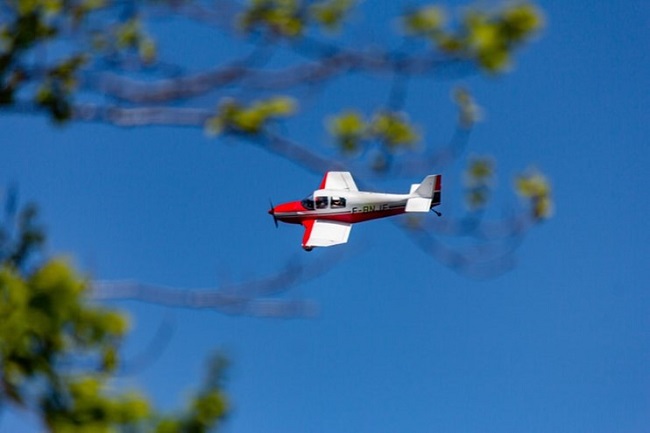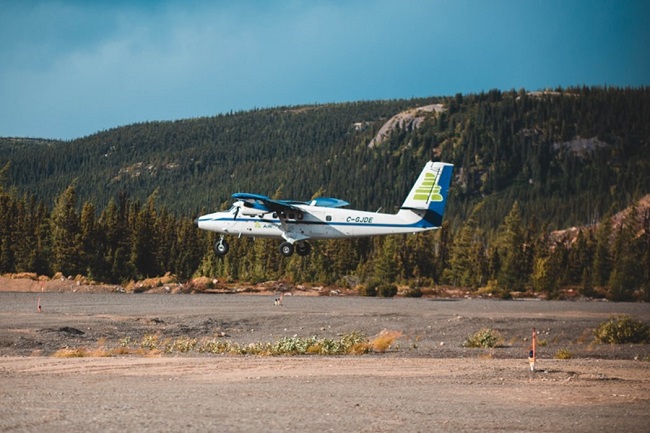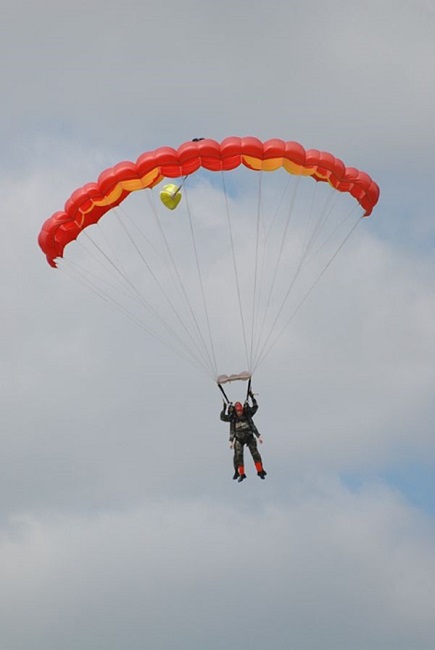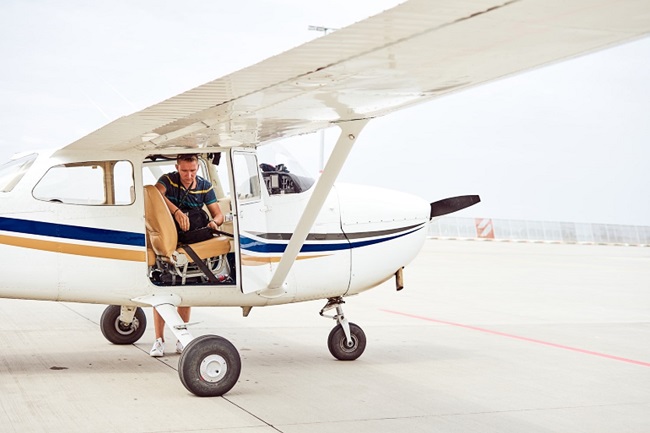
The new year has gotten well underway, and I hope we all have survived the election process, but unfortunately the COVID-19 virus is still with us. This too will pass, but it won’t be too soon, believe me. I’m certain everyone else feels the same way. On a positive note though, having all the meetings on Zoom or a similar venue is a positive thing in that there isn’t a lot of time being wasted driving to, and from meetings and the same amount of work is accomplished in less time. But frankly, the personal interaction is missed.

In our last report we mentioned the Tucson International Airport (TUS) and the Ryan (RYN) Air Traffic Control Towers were operating intermittently or were closed because of the COVID-19 virus. The latest word is that both towers are now operating normally on their regular operating schedule. Because the virus is still with us, these operating hours could potentially change, so it might be wise to check the airport NOTAMs before departure if you don’t want a surprise upon arrival.
Because of the present virus pandemic, the City of Buckeye has decided to cancel their Buckeye Air Fair for 2021 and replace it with a virtual event with aviation videos during the week February 7 thru February 13. As a result, the Copperstate fly in portion of the event, as we have known it, has also been canceled, and the Copperstate directors decided they will have a casual, one day fly-in at Buckeye on Saturday February 13th. There will not be an airshow nor any RV parking, or vendors, forums or workshops, just a casual fly-in get together. Organizers said they are planning to host an in-person Buckeye Air Fair event on February 11 through 13, in 2022.

I apologize if this month’s report may be a bit brief, but because of the COVID-19 virus, much of the aviation information is a bit difficult to gather. Some meetings are continuing online, and some that were a good source of information have been discontinued for the duration.
MISCELLANEOUS ITEMS
FAA
The FAA has issued Notice Number: NOTC1650 entitled FAA Air Traffic Facilities Affected By COVID-19. This Notice is intended to alert General Aviation (GA) pilots of the conditions they may encounter while operating in terminal airspace or controlled airspace surrounding an airport tower when those ATC facilities close for COVID cleaning. Due to the COVID-19 public health emergency, the FAA has temporarily closed certain ATC facilities, which may impact or reduce ATC services or leave the airspace uncontrolled or handled by another facility. Often these closures have been in high volume airspace with a mix of GA and Air Carrier operations.

Please take the time to consider the following if you are planning a flight to and from airports with ATC Towers:
* Check Notices To Airmen (NOTAMS) and thoroughly review your pre-flight briefing. NOTAMS for ATC Zero can pop up quickly.
* If the airport is familiar to you, realize that the normal ATC procedures such as arrival routes, traffic patterns, etc. may not be in place during non-towered operations. It is now up to the pilots arriving and departing the airport to provide separation and sequence landing and takeoff operations.
* Tune in to the Common Traffic Advisory Frequency (CTAF) well in advance to raise your situational awareness of the flow of traffic already established at the airport.
* Whether you are VFR or IFR, announce your position and intentions prior to the Final Approach Fix (IFR) or at least ten miles prior to entering the established traffic pattern (VFR).
* If you cannot adequately determine the flow of traffic and your position in the flow, do not hesitate to hold a safe distance from the airport until your situation is clear to you. You can always fly to an alternate until things settle down at your destination.
* Once on the ground exercise extreme caution taxiing to and from the runway AND make sure that the runway and extended centerline in both directions is clear of traffic before crossing any runway.
* Above all keep your eyes and ears outside the cockpit as much as possible so you can see and avoid an unintended occurrence.

Here are some online resource that may help:
https://www.faa.gov/coronavirus/map/
The Airmen’s Information Manual - Airport Operations
Continue to be on the watch for TFRs, and as always, before flight, check for TFRs and NOTAMS, and be sure to always fly informed.
The FAA has finalized an airworthiness directive (AD) that requires a wing spar inspection of numerous Piper PA-28 and PA-32 aircraft models. The AD resulted from a fatal accident that claimed the lives of a commercial pilot applicant and the designated pilot examiner when a wing separated in flight. The AD will take effect on February 16, and calls for the determination of hours the airframe has been in service, and per a prescribed formula determine if an inspection is required of the lower main wing spar bolt holes for cracks, and replacement of any cracked parts. The FAA indicated they would accept some eddy current inspections of the affected area before the AD was issued as an Alternative Method Of Compliance (AMOC) per Advisory Circular AC 39-10, and after a review of the inspection data, approval on a case by case basis. The NTSB determined that the wing separation that resulted in the issuance of the AD was not the result of corrosion, as initially thought, but was metal-fatigue cracking associated with flight training maneuvers and frequent landing cycles.

AIRSPACE
Trying to avoid skydivers when flying between Tucson and Phoenix can be problematic at times. And if that isn’t bad enough, it has come to our attention that there appears to be a skydive problem that has been occurring when flying into Marana Regional Airport (AVQ). They have an active skydive operation there, and pilots landing or taking off on RWY 12 have experienced close encounters with skydivers using a drop zone close to the runway between taxiways Alpha and Charlie and RWY 3/21. A drop zone normally utilized by the Marana skydivers that is located north and west of the airport runway and taxiway complex, while a bit problematic at times, is a far safer option than the drop zone between taxiways A,C, and RWY 3/21 which is being used by military skydivers. This latter option also requires skydivers to cross an active taxiway returning to their base of operations after landing. An airport committee consisting of airport users, skydive operator, and FAA FAAST team members is being formed in an effort to find a safe and equitable solution. It’s a problem that needs to be addressed immediately because it’s an accident about to happen, and the results would be deadly for all involved.
A potential solution to the skydive issue at Marana could be an Air Traffic Control Tower (ATCT) for the airport. Approximately a year ago the City of Marana launched into an FAA funded ATCT project. The airport has completed the request for quotes (RFQs) for the various components of the siting study, environmental assessment, architecture, and engineering services. These RFQs will be issued very soon and they are confident the FAA will issue them a grant for the siting study for an ATCT in the near future.

The airspace world appears to be continuing to operate smoothly and calmly and there hasn’t been anything that has come to our attention that would warrant your attention or would impact your flying activity at the moment other than the skydive issue at the Marana Airport. Just fly carefully, and be aware of the airspace you are flying in, and be aware of its limitations.
SAFETY
Winter weather has arrived, and there may be times when you will be presented with questionable flying weather conditions, both while planning a flight, or in flight, and when you are, whether you are instrument-rated or not, use extra caution. The Inadvertent transition from VFR to IMC can be very dangerous for both IFR, and non IFR rated pilots. Some IFR rated pilots may be able to handle the transition, but for a non IFR rated pilot the results are usually disastrous. Please don’t push your luck. The completion of any trip can’t be that important. Please fly safe.
With the present low ambient temperatures we are now encountering it is interesting to note the significantly increased aircraft/engine performance. I’m certain our own performance has also increased a bit with the lower temperatures. But use caution, don’t demand a level of performance that may be greater than what the airplane or you may be capable of achieving. Fly conservatively.

Aviation safety in this past reporting period appeared to be pretty good, but it’s hard to make an accurate assessment because aviation accident information is not presently available from the NTSB. It is still unknown when they will have their new reporting website operating. So, in the meantime information is being obtained from the Aviation Safety Network (ASN), and from individuals that submit information. One has to recognize that the ASN information is taken almost exclusively from media reports, and these reports are prepared by reporters that are often not aviation-oriented reporters. As a result the information reported may not be entirely accurate, and the reports are brief and usually devoid of technical detail. It’s much like a report that would appear on TV. Also the reported accidents are not based on structural damage that may have occurred, as it is with NTSB reports, but rather on the media appeal of the accident. At this point, we would like to solicit your help. If you are aware of an aviation accident occurring here in Arizona, please advise us at This email address is being protected from spambots. You need JavaScript enabled to view it. of the date, location, aircraft make, and type, and with as much detail as possible.
This month’s safety summary contains only three aircraft incidents, and fortunately all were relatively minor in nature, and there weren’t any very serious injuries or fatalities. I suspect flying activity may have been curtailed a bit because of the virus pandemic we are experiencing. I can’t believe everyone is flying that much more carefully. In any event, see my January Accident Summary report elsewhere in this newsletter for the details of what we have, and please, do continue flying safely.

CONSTRUCTION
Evidently, funding is still being made available by the FAA, and several airports around the state have construction projects planned or in progress. Unfortunately we don’t have all the latest details of these projects, so check for NOTAMs at your destination airport to see what may be occurring so that when you arrive you don’t have an unexpected surprise. Always use caution, and fly informed.
APA is actively working with a number of airports around the state assisting with the updating of their Airport Master Plans, thus providing the pilot and aircraft owner’s perspective in the process. Lake Havasu City Municipal Airport (HII), Superior Municipal Airport (E81), Sedona Airport (SEZ), Flagstaff (FLG), Laughlin/Bullhead International Airport (IFP), Grand Canyon Airport (GCN), and H. A, Clark Memorial Field (CMR) in Williams are currently in the Master Plan update process.
THINGS TO DO - PLACES TO FLY FOR BREAKFAST:
Because of the present virus pandemic, some of the airport restaurants may have take-out service available. Call ahead.
The fly in breakfast at Coolidge Municipal Airport (P08), is on the first Saturday of the month, and the breakfast season is operating on schedule.

On the second Saturday consider flying down to Ryan Field (RYN) near Tucson for breakfast or lunch at Ritchie’s Restaurant. They are open from 6 am to 2 pm to serve you. They will have a breakfast special for you if you mention you are an APA member.
The Falcon Field EAA Warbirds Squadron fly in breakfast is on hold because of the virus pandemic. They will re-start awaiting approval from the City of Mesa. Here’s hoping for an October restart.
Grapevine is open full time, but the third Saturday of each month is a special time for a group camp dinner on Saturday evening. Come and camp for the weekend! The camp host will prepare the main course, and campers, please bring a side dish or dessert to share. Always check for TFRs because Grapevine, which lies within a National Forest, is heavily used by the Forest Service for fighting wildfires, or the Military for Special Training.
The City of Casa Grande is still planning on refurbishing the food service area in their Airport terminal area formally occupied by the Foxtrot Cafe. They have issued a request for quote for someone to provide food handling services at the airport. Hopefully the Casa Grande Airport will again have a fly in breakfast available soon on the last Saturday of the month.
Check with the APA Getaway Flights program and online calendar for fun weekend places to fly.
